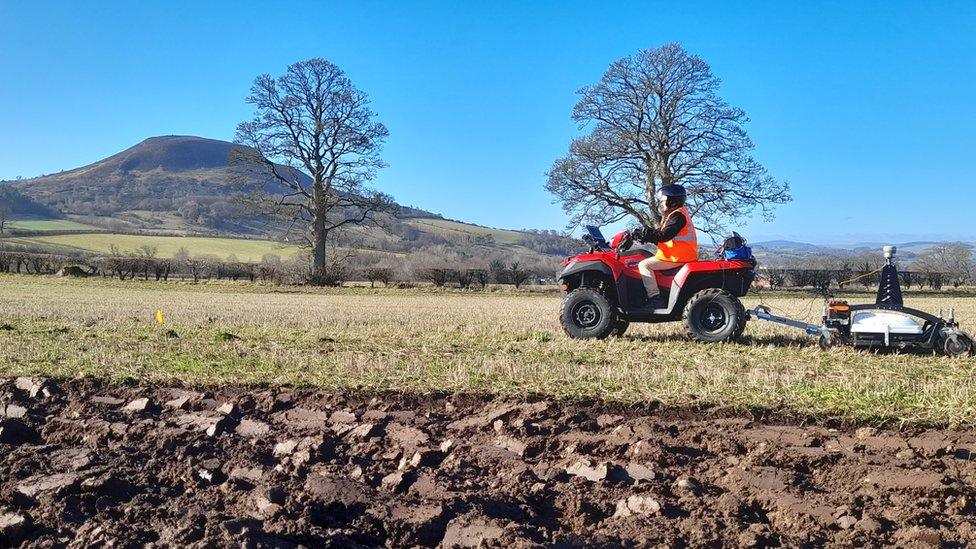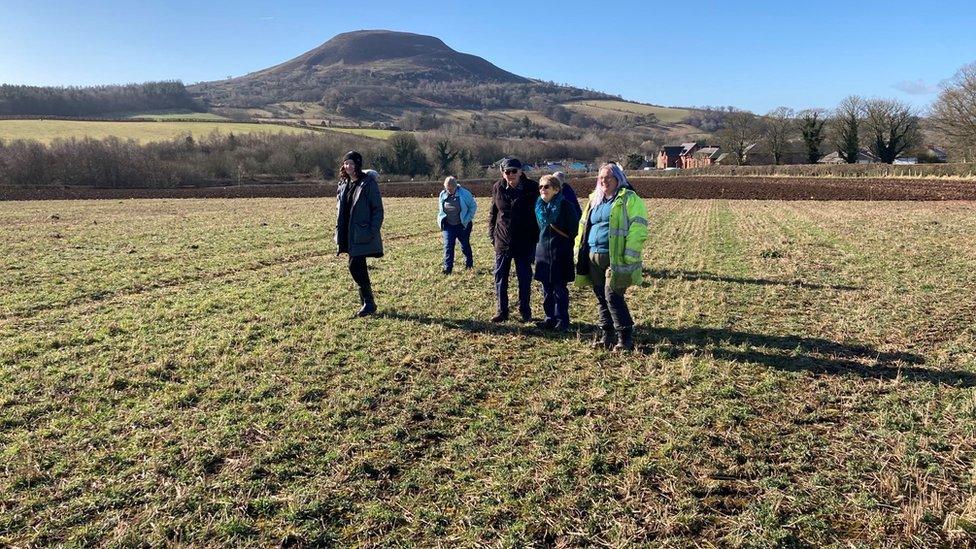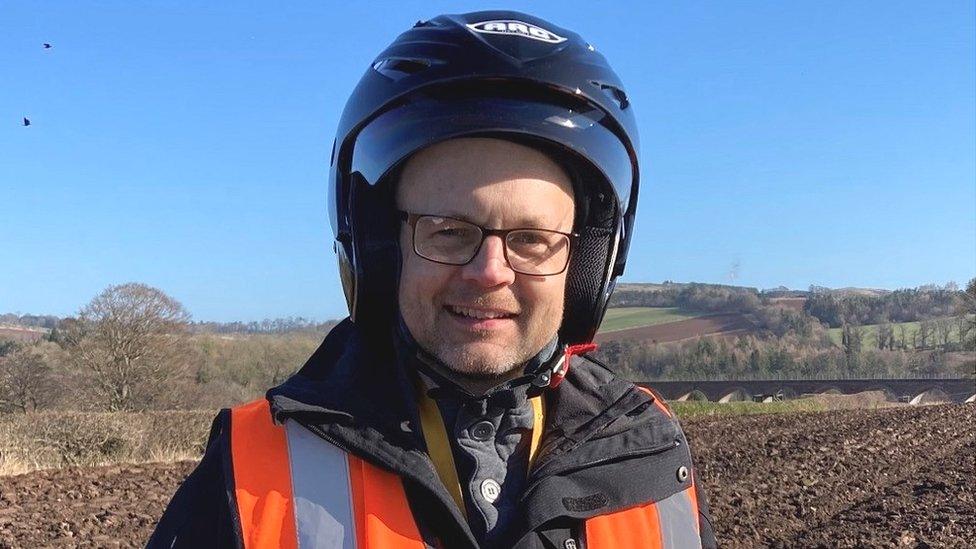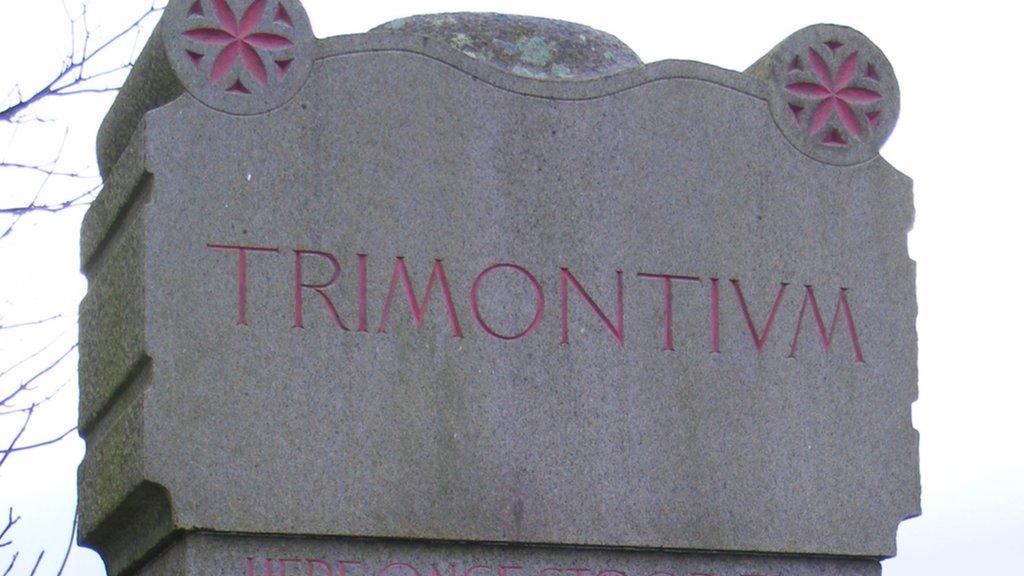Roman fort survey near Melrose aims to unveil more secrets
- Published

Radar equipment is being used to survey the site near Melrose
A clearer picture of Scotland's largest Roman fort is expected to emerge after hi-tech geophysical surveys in the Borders.
Some of the country's leading historical surveyors have descended on Trimontium, near Melrose, to use the very latest in ground penetrating radar.
It's the first time the equipment, which was used recently at Stonehenge as well as at Viking ship burial sites in Norway, has been used at a Roman site in Scotland.
A fort was first built by the invading Roman army at the site beneath the Eildon Hills in about 79AD, and grew in size and importance to support a population of up to 3,000 at its height.

Dr Kayt Armstrong said the survey could "fill in a lot of gaps" in knowledge of the site
Trimontium's fortunes mirrored that of Rome's expansion north of Hadrian's Wall and the later retreat with the fort finally being deserted for good in about 180AD.
The fort was only rediscovered in 1846 during the construction of a nearby railway.
Following several 20th Century archaeological explorations and surveys - particularly a major five-year dig between 1905 and 1910 - the size and significance of Trimontium has emerged.
Experts believe that the latest survey on the scheduled site, which is conducted with permission from several heritage bodies, will lead to an even clearer picture of the fort being available for future studies.

Project lead Dr Kayt Armstrong said: "Despite Trimontium being a well-known site and having had a series of excavations in the past, we don't have accurate information about where some of the previous trenches were.
"The high density radar will let us relocate the excavation trenches from 1910, and allow us to use modern mapping methods to pull them all together and work out how they relate to what's beneath the ground.
"We are hoping, with this fantastic technology, to fill in a lot of gaps."
Among the key objectives of the surveys is to pinpoint the exact location of the bath-house and principia (principal's building).
The high-resolution images that the radar will produce could also lead to other discoveries.

A group of volunteers has been trained to help with the work
Geophysics expert James Adcock, who has worked on 80 Time Team programmes, is excited by what will emerge.
He said: "It is very rare that we get onto sites of this status.
"Being able to tie everything onto one model is very important for us.
"Pinning down what has been done before, along with this cutting-edge technology survey, allows us to see Trimontium in a level of detail never experienced before."
A community aspect has been added to the surveys, with volunteers being trained in using geophysics and analysing the results.

James Adcock said the work would give a level of detail never previously seen
Trimontium Heritage Officer, Rob Longworth, has welcomed their involvement.
He said: "We will have around 30 volunteers on site.
"The volunteers will be given a rare opportunity to learn how to use geophysics equipment, and with their help we hope to be able to identify the exact site of the bath-house.
"The Trimontium Trust is all about telling stories about the Iron Age in the Borders region, and the Roman occupation."
He said the surveys would give a better understanding of the site and allow them to provide "even more stories" of what happened there.
"With the construction of the new Trimontium museum and this survey taking place, it's an exciting time for all of us," he said.
The AOC Archaeology Group surveys, using equipment loaned by commercial company SYGMA, were set to last for about a week.
After that, they will be analysed to see what more they have to say about the area's Roman past.
Related topics
- Published11 January 2013
